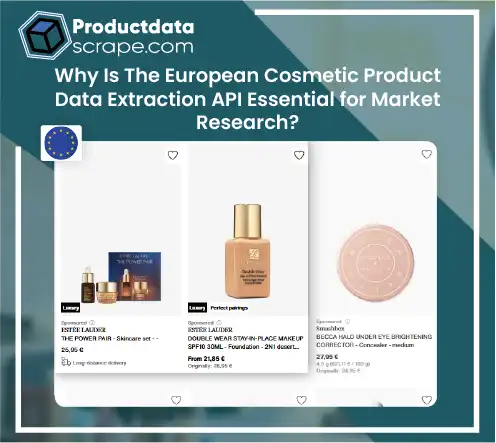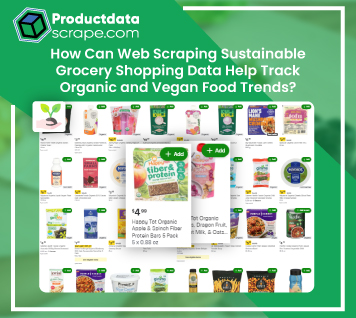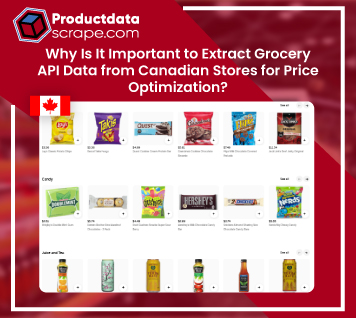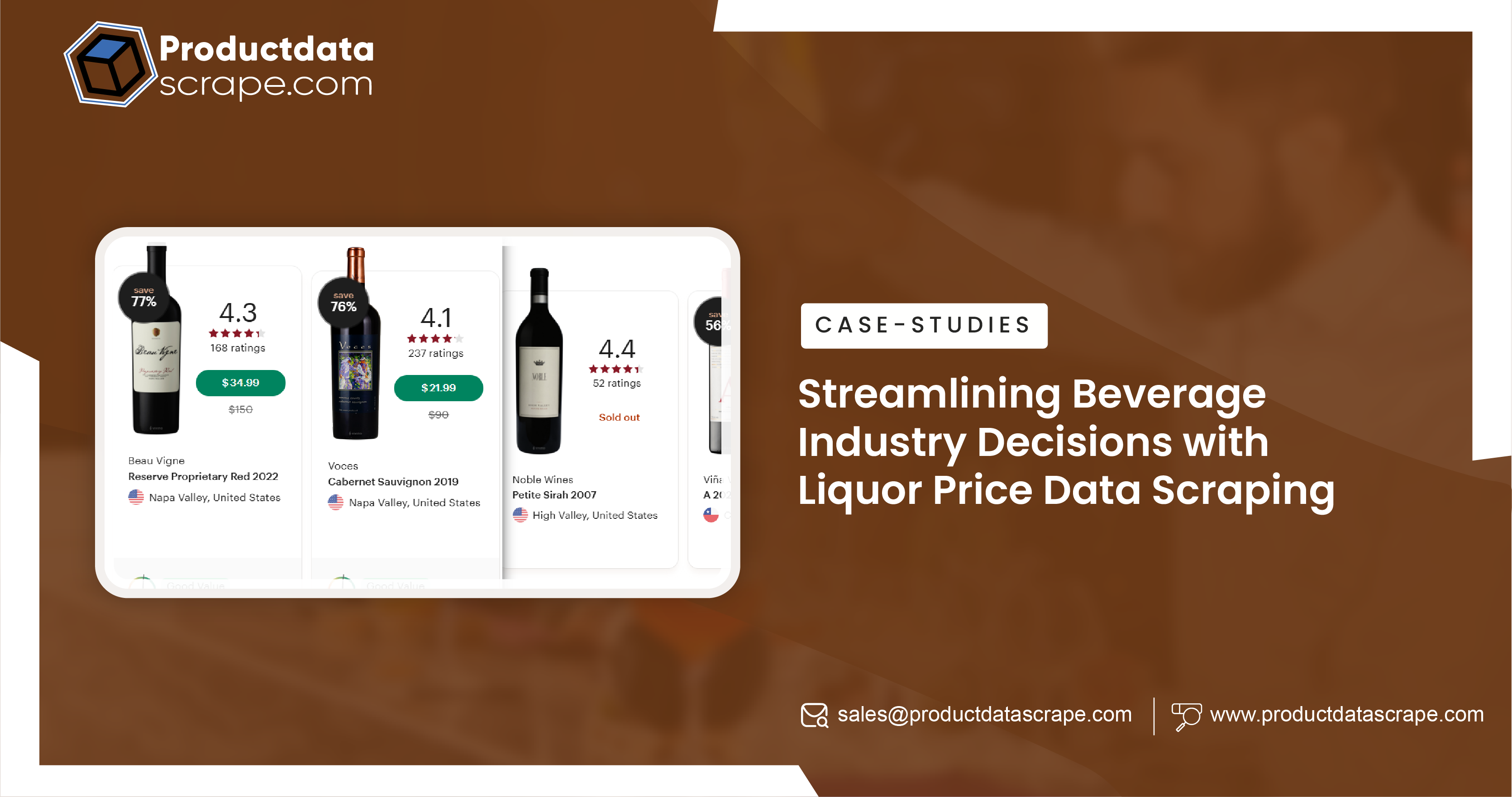
This case study highlights how our Liquor Price Data Scraping solution enabled clients to collect
real-time pricing data on alcoholic beverages. The client gained valuable insights into market
trends, competitor pricing, and consumer demand by extracting data from multiple sources,
including retail websites and online liquor stores. Using this data, they optimized their pricing
strategy, ensuring competitive rates while maximizing profitability. Our Alcohol Data Scraping
Services helped them streamline operations, adjust prices dynamically, and enhance decision-
making in the beverage industry. This data-driven approach empowered the client to stay
ahead in an evolving and competitive liquor market.
The Client:
Our client, a well-established name in the beverage industry with a strong online presence,
aimed to collect accurate pricing data for various liquor brands. To achieve this, they leveraged
our Beer and Liquor Market Data Scraping services, enabling them to track competitor prices,
discounts, and market trends in real-time. By utilizing our Alcohol Inventory Data Extraction
solutions, they efficiently gathered comprehensive data on alcohol pricing, stock availability,
and promotional strategies. This empowered them to optimize pricing, enhance inventory
management, and maintain a competitive edge in the evolving liquor market while ensuring
profitability and customer satisfaction.
Key Challenges:
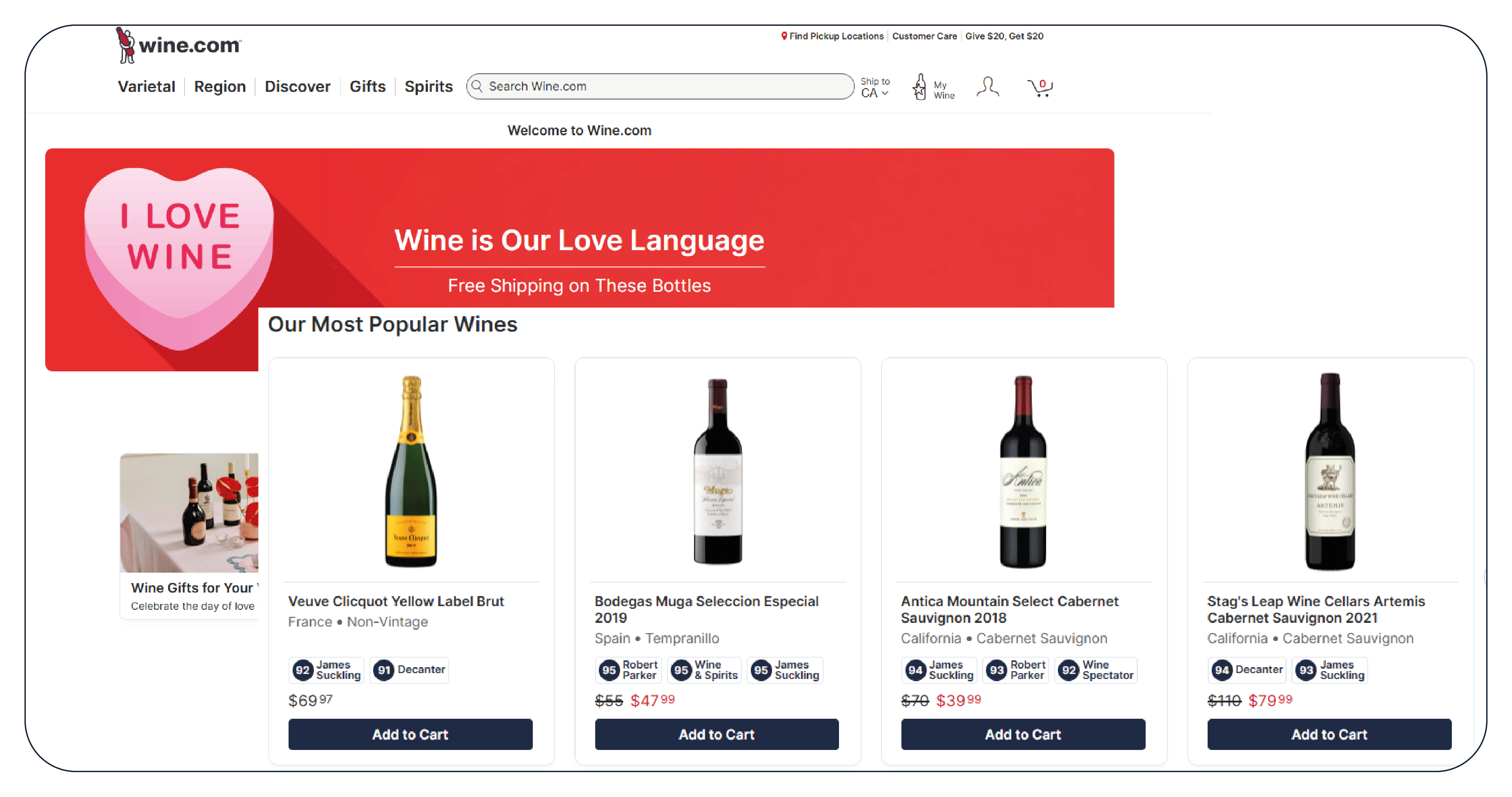
While collecting data from liquor websites, our client faced several uncommon challenges that
created significant obstructions. Many platforms had anti-scraping measures, such as CAPTCHA,
IP blocking, and dynamic pricing updates, making data extraction complex. Our Web Scraping
for Liquor Pricing solutions helped overcome these barriers by implementing proxy rotation,
CAPTCHA solving, and real-time data monitoring. Additionally, inconsistencies in data
formatting across different sources made Liquor Store Product Data Scraping difficult. Using
advanced parsing techniques, we ensured accurate and structured data collection. Our
Beverage Industry Web Scraping services provided the client with seamless data access,
enabling them to refine pricing strategies and maintain competitiveness in the liquor market.
Key Solutions:
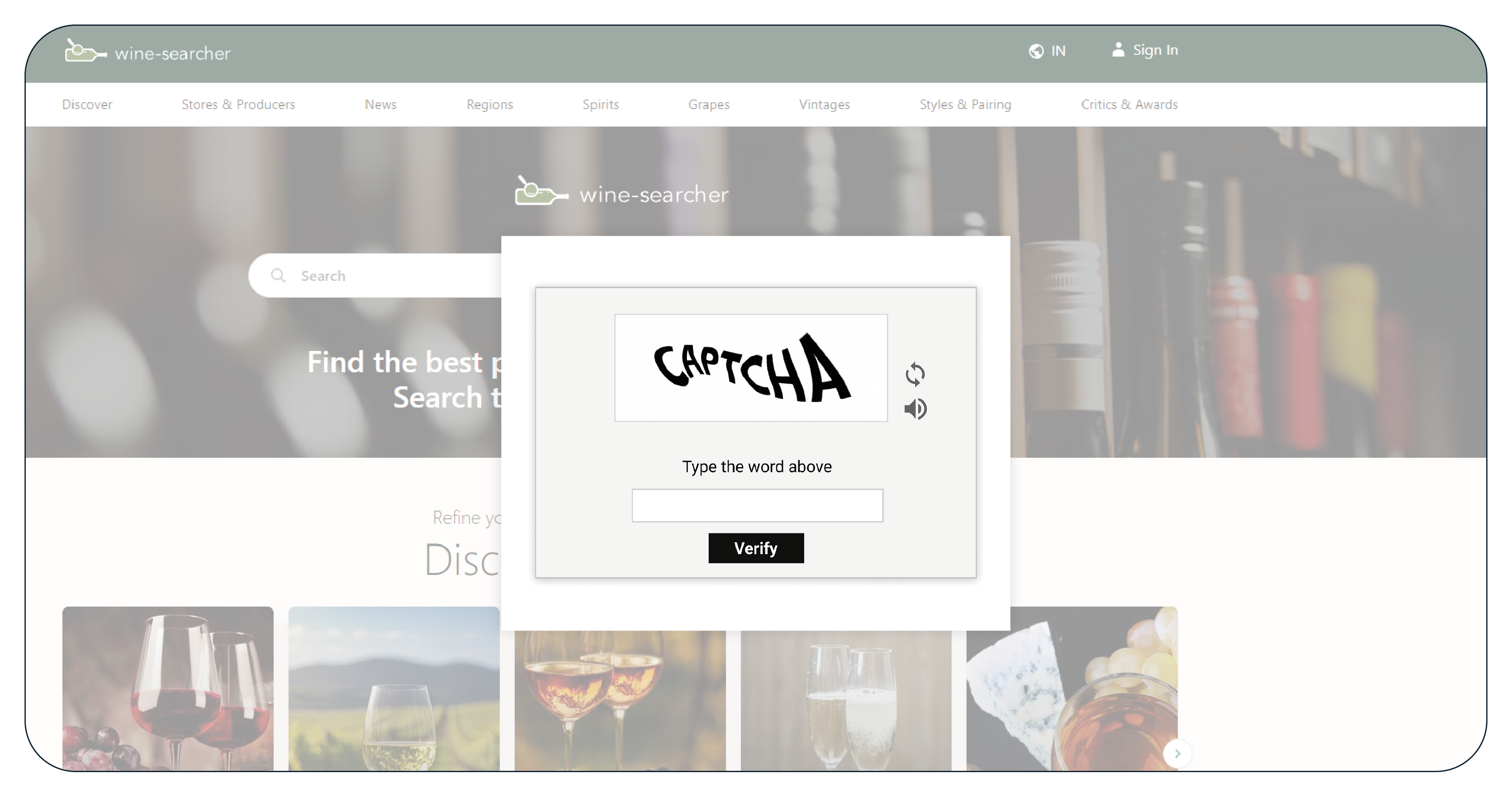
They approached our services for advanced solutions to tackle liquor price data collection
challenges. To ensure seamless data extraction, we implemented cutting-edge techniques to
Extract Alcohol & Liquor Price Data efficiently from multiple online sources. Our Web Scraping
Alcohol & Liquor Data solutions utilized proxy rotation, CAPTCHA bypass mechanisms, and AI-
driven parsing to overcome website restrictions. Additionally, we deployed automated scripts
to Extract E-commerce Data from liquor retail platforms, ensuring real-time pricing insights and
structured datasets. These solutions enabled our client to monitor competitor pricing, optimize
pricing strategies, and enhance decision-making in the highly competitive liquor market.
Methodologies Used:
We used the following methodologies to collect liquor data:
1. Automated Web Crawling & Parsing: Our system navigated multiple liquor retail websites, extracting real-time pricing, stock availability, and discount details. We ensured structured and accurate data collection from online liquor stores, wholesalers, and marketplaces through Web Scraping E-commerce Websites.
2. Dynamic IP Rotation & CAPTCHA Bypass: To prevent IP bans and avoid detection, we implemented rotating proxies and CAPTCHA-solving techniques, allowing uninterrupted data extraction.
3. Data Normalization & Structuring: Since pricing formats varied across platforms, we standardized the extracted information for seamless analysis using eCommerce Dataset Scraping methods.
4. Real-time Monitoring & Alerts: Our system provides instant updates on price fluctuations and promotional changes to help the client stay competitive.
5. Cloud-based Storage & API Integration: The collected data was securely stored and integrated into the client’s systems for real-time access and strategic decision-making.
Advantages of Collecting Data Using Product Data Scrape

1. Accurate & Real-Time Data Extraction: Our advanced scraping techniques ensure precise and up-to-date liquor pricing, stock availability, and promotional insights, helping businesses make informed pricing and inventory decisions.
2. Bypass Anti-Scraping Measures: We implement proxy rotation, CAPTCHA solving, and dynamic request handling to seamlessly extract data from protected liquor websites without interruptions or IP bans.
3. Customized Data Structuring: Our solutions provide well-structured datasets, making it easy to analyze competitor pricing, market trends, and customer demand across multiple e-commerce platforms.
4. Scalability & Automation: Our automated liquor data scraping services efficiently handle large-scale data collection, reducing manual efforts while ensuring continuous and comprehensive market monitoring.
5. Seamless API & Cloud Integration: We offer API-based data delivery and cloud storage solutions, allowing businesses to integrate liquor pricing data into their existing systems for real-time access and strategic decision-making.
Client's Testimonial
"Working with this team has been a game-changer for our business. Their ability to collect
accurate and real-time liquor pricing data helped us stay competitive in a rapidly changing
market. The seamless integration of their data solutions into our system allowed us to optimize
pricing strategies and improve inventory management. Their expertise in overcoming technical
challenges ensured uninterrupted data collection, providing us with valuable insights for
strategic decision-making. We highly recommend their services to any business looking to
enhance its market intelligence and pricing efficiency."
— Michael Anderson, Pricing & Strategy Manager
Final Outcomes
The scraped liquor data enabled our client to manage their pricing effectively by providing real-
time insights into competitor rates, discounts, and stock availability. With this data, they
adjusted prices dynamically to stay competitive while maintaining profitability. They also
identified market trends, optimized promotional strategies, and ensured better inventory
management. By analyzing pricing fluctuations, they avoided underpricing or overpricing,
leading to improved revenue generation. Additionally, seamless data integration into their
system allowed for automated updates, reducing manual efforts and ensuring precise decision-
making in a highly competitive liquor market.





